Amanda Levete's Tincan restaurant presents tinned seafood as "objects of desire"
London Design Festival 2014: architect Amanda Levete has opened a pop-up restaurant in London's Soho where tins of fish and seafood are displayed in a "a museum-type vitrine" before being dished up to customers to eat straight out of the can (+ slideshow).
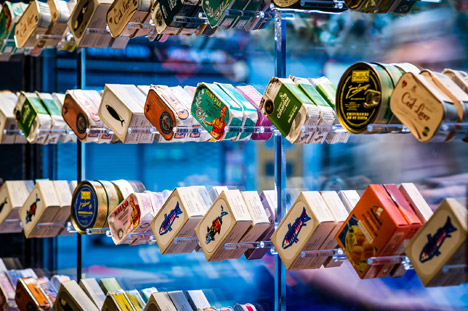
According to Levete, the project was inspired by a visit to a restaurant in Lisbon with several members of her studio, AL_A.
"It was a former fishing tackle place, a tiny little room that had been converted into somewhere that just sold tinned fish," she told Dezeen.
"I became obsessed before I'd even found it because someone had told me about it. So we went there for lunch, and what started out as lunch quickly became an idea and quickly became a project," she said.
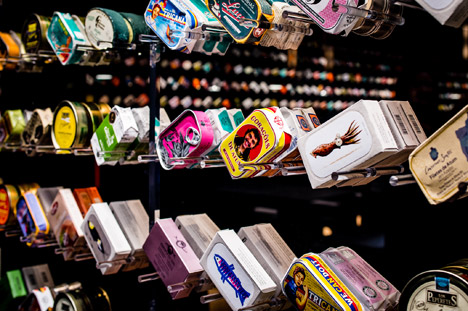
Levete – who made her name as one of the directors of Future Systems alongside her former husband, the late Jan Kaplický – decided to recreate the space in London, acting as both client and architect for the project. Named Tincan, the restaurant opened this week as part of the London Design Festival and will remain in place for the next six months.
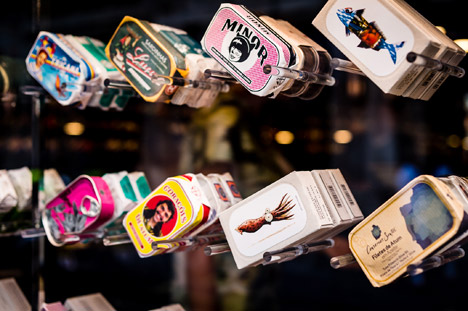
The starting point for the project was the food – the team sourced produce from countries including Portugal, Spain, Iceland and Iran, with an aim to serve "the best tinned seafood in the world". There was no need for a kitchen, as the fish is served as it comes.
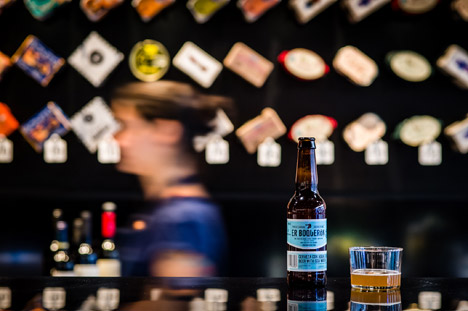
"To begin with we've got 35 things on the menu, probably the best canned produce you'll ever eat in the world. And that's it! That's all we sell." Levete explained.
"We take the tin and if it's beautiful we'll serve the dish in the tin. We'll take the excess oil off, put it on a dish and put bread, salt, chilli peppers and shallots on the table, and that's it," she said.
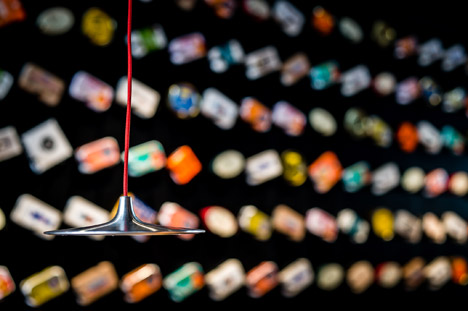
To celebrate the iconography of the cans and their packaging, they were used as the main decoration in the space. A series of plastic prongs on the walls and behind the shopfront create a framework for displaying the tins in rows.
"We thought: 'Let's elevate the humble tin into an object of desire, let's put it in a museum-type vitrine, let's make a spectacular display of them'," she said.
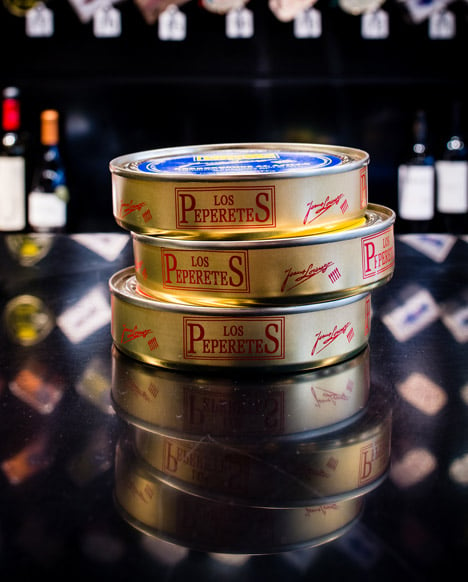
AL_A worked with different material suppliers to custom-make all of the furniture and fittings for the space. A sheet of extra-black Corian provided a surface for the main wall, and was shaped to frame a space for displaying special or featured items.
Bespoke pendant lights were made using OLED technology from LG, while stackable seating and tables were produced by Portuguese furniture brand Iduna.
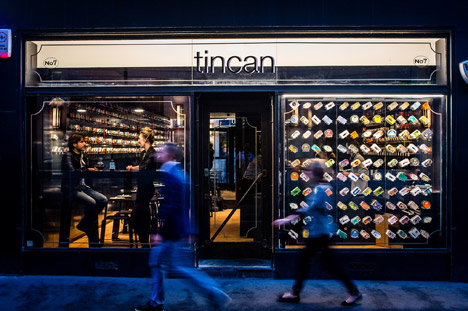
Levete and her team even plan to wait tables. "Whenever I'm on a break from meeting a deadline, I'll be down helping out. We're thinking of having guest waiters, maybe even getting some of our clients to do it," she said.
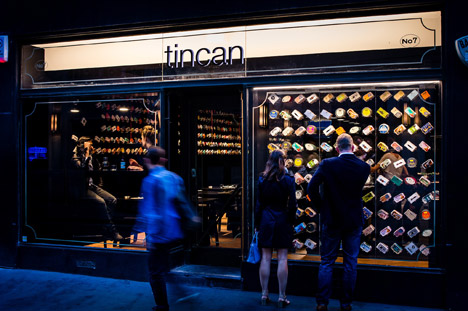
Read on for the full interview with Amanda Levete:
Amy Frearson: Can you tell me about the project and how it came about?
Amanda Levete: We're designing a cultural centre in Lisbon, we've been working on it for about three years. We've spent quite a lot of time in Lisbon doing site visits, client visits, etc. Max [AL_A director Maximilliano Arrocet]– who's leading the project – is Spanish, and he and I came across this shop. It was a former fishing tackle place, a tiny little room that had been converted into somewhere that just sold tinned fish.
I became obsessed before I'd even found it because someone had told me about it. So we went there for lunch, and what started out as lunch quickly became an idea and quickly became a project. Almost a year ago we were having a director away day and having a review of our last year – what worked, what didn't, what we wanted to do. We'd lost a couple of competitions that I really thought we should have won and we were really pissed off about it, so we thought, why don't we do a project where we are the client? We'd never done that and thought it would be so fun. It was as mad as that.
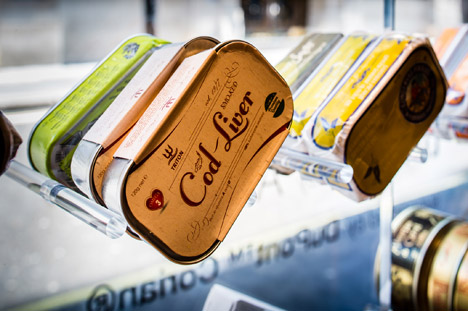
Amy Frearson: So what was the starting point?
Amanda Levete: We thought about the graphics on the tins, because the iconography is fantastic. We thought: "Let's elevate the humble tin into an object of desire, let's put it in a museum-type vitrine, let's make a spectacular display of them which will be the space, and then let's source the best tinned seafood in the world." So not just from Portugal – from Spain, from Iceland, from Iran, various different places. So that became the project.
We found this space in Soho, which has a very short lease – because this is only an idea, we're just doing it for a six month project – and the more we looked at this space the more ambitious we got about how we were going to display things. We can't, as architects, come in and paint the walls black, we have to do something a bit special. So we called in all our collaborators.
Corian have this new black – a very deep black. It made an absolutely perfect backdrop, plus we can mould the Corian. Then we decided to design all the furniture, because we couldn't really find anything that was simple enough. We had also been wanting to use OLED, this ultra-thin light source, and to design a light that would show that off. So Corian have given us material, LG has given us the OLED lights, and a Portuguese furniture company I know made us a prototype – so everything came together.
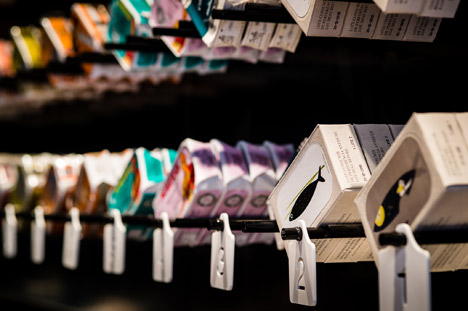
Amy Frearson: Can you tell me about the food you're serving?
Amanda Levete: You can't get this seafood at the supermarket. We had a huge number of tastings at the office and everything that tasted like you could buy it at the supermarket, no matter how nice it tasted, we thought no.
We've got some fantastic dishes like tuna marinated in fennel seeds and olive oil. We have the finest belly of bonito tuna, incredible thin strips – it's so delicate. We've got tinned squid in its own ink, we've got cockles, we've got clams in their shells with garlic. We've also got this incredible cod liver from Iceland which is like the fish foie gras. It's packed in cod liver – it makes its own oil which is pure omega 3. People in Iceland actually save the oil and keep it in a bottle in the fridge, so that instead of taking capsules they'll just have a spoonful a day.
Amy Frearson: How did you go about sourcing them?
Amanda Levete: Max started calling all of our Portuguese friends, starting ordering samples in. By chance I also met the first lady of Iceland at a dinner, who suggested stocking this cod liver, which she said was the best cod liver in the world. So we just built it up.
To begin with we've got 35 things on the menu, probably the best canned produce you'll ever eat in the world. And that's it! That's all we sell. We take the tin and if it's beautiful we'll serve the dish in the tin. We'll take the excess oil off, put it on a dish and put bread, salt, chilli peppers and shallots on the table, and that's it.
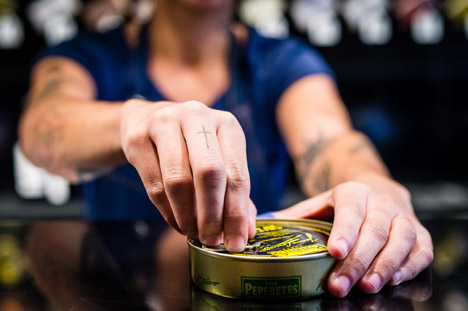
We're also serving a fantastic beer, a Spanish beer that has never been sold in this country before, and it's the only beer in the world made from sea water. And it happens to have fish on the label. It's a kind of light-hearted thing. We just wanted to try some new tastes, and if you haven't had it you're missing out.
Amy Frearson: What are your plans for the restaurant over the six-month period?
Amanda Levete: We're going to have a programme of talks, events, evenings, but want to run it smoothly first.
Believe me, we're never going to do a pop-up restaurant again, it's so much work! I've suddenly got so much respect for people who own a cafe. But it's fun and actually it's really good for the team in the office. It's lighthearted but has also shown what we can do as architects and that we can be entrepreneurial.
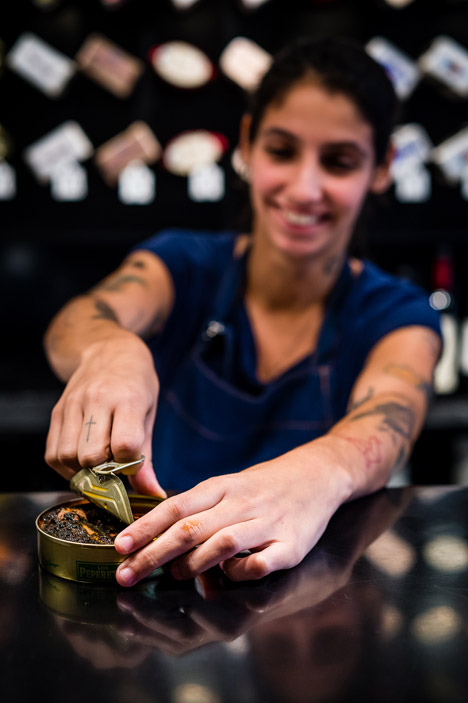
We're going to be helping people wait tables. Whenever I'm on a break from meeting a deadline, I'll be down helping out. We're thinking of having guest waiters, maybe even getting some of our clients to do it.
Amy Frearson: So it becomes a bit of light relief after all of those competition losses?
Amanda Levete: It's a nice antidote to that. Doing a competition, you spend a lot of money, so it's just nice to invest in ourselves for once.